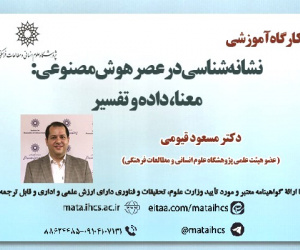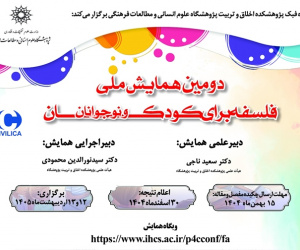محمد اسمعیل معمار در اسناد تاریخی دورۀ قاجار شیراز (مقاله علمی وزارت علوم)
درجه علمی: نشریه علمی (وزارت علوم)
آرشیو
چکیده
شناخت سامانمند و ثبت شده چندانی از نام و نشان معماران شیراز در دوران پیشامدرن وجود ندارد؛ این در حالی است که بخش قابل توجهی از بافت تاریخی این شهر به روزگار قاجاریان تعلق دارد. هدف این پژوهش معرفی یکی از معماران ناشناخته شیراز عصر قاجار به نام «محمداسمعیل» از خلال کتیبه ها و نامه های موجود در آرشیو ها است و می کوشد نقش و جایگاه (مرتبه) وی را براساس مطالعه این مدارک شناسایی کند. راهبرد این پژوهش تفسیری-تاریخی و از اسناد موجود در منابع آرشیوی به عنوان پایه اصلی پژوهش بهره برده است. اطلاعات تکمیلی در خصوص شناخت دیگر شخصیت های موجود در اسناد از منابع کتابخانه ای تأمین شده است. براین اساس این پرسش مطرح است که محمداسمعیل چه نقش و جایگاهی در جامعه آن دوران داشته است؟ نام وی در کدام یک از کتیبه های احداثیه بناهای تاریخی شیراز آورده شده است؟ و این اسناد چه نوع ساختار اجتماعی را در پیوند با مفاهیم «قدرت» و «کنشگران» بازنمایی می کنند؟ یافته های پژوهش شامل چهار سند از سال 1302 تا 1330 ق. هستند که درمجموع نشان می دهند «محمداسمعیل معمار»، معمار تکیه یا آرامگاه خاندان قوام، از کارآزمودگان و معتمدین صنف معماری شیراز بوده و دستکم در سه موضع شامل «سازنده بنا»، «کارآزموده معماری در ارزیابی و ارزش گذاری بنا» و «احدی از آحاد شهر» حاضر شده است. این اسناد نشان دهنده بخش هایی از زندگی صنفی و خانوادگی اوست. نکته جالب توجه این است که دو اثر مهر متفاوت از وی به همراه اثر مهری متعلق به فرزندش، «محمدکاظم»، در این اسناد دیده می شود که هرکدام در موقعیت متفاوتی استفاده شده اند. همچنین همکاری او با «استاد آقا»، دیگر معمار شیرازی، در این مکاتبات آشکار شده است. هرچند در هیچ سندی از «محمداسمعیل» با صفت «استاد» یاد نشده است، ولی یافته ها نشان می دهند که وی شأنی ممتاز داشته و در «میدان قدرت در ساخت شهر» کنشگری امین بوده است.Muhammad Esma’il, the Architect, in the Historical Qajar-Era Documents of Shiraz
Systematic and documented knowledge regarding the names and identities of architects in Shiraz during the pre-modern era remains limited, despite a significant portion of the city’s historical fabric dating back to the Qajar period. The aim of this study is to introduce one of the unknown architects of Qajar-era Shiraz, Muhammad Esma’il, through inscriptions and letters preserved in archives, and to identify his role and position (stage) based on the analysis of these documents. The research is interpretive-historical, relying primarily on documents preserved in archival sources. Supplementary data for identifying other individuals mentioned in these documents has been obtained from library resources. Accordingly, the following questions are posed: What role and status did Muhammad Esma’il hold in the society of his time? In which inscriptions on historical buildings in Shiraz is his name recorded? And what kind of social structure do these documents reflect in relation to the concepts of ‘power’ and ‘agents’? The research findings include four documents dated between 1184 and 1912, which collectively indicate that ‘Muhammad Esma’il Mi’mār,’ the architect of the Takyeh or tomb of the Qavām family, was one of the experienced and trusted members of the architectural guild of Shiraz and had assumed at least three roles: ‘constructor of a building,’ ‘experienced architect in evaluating and estimating a building,’ and ‘one of the city residents.’ These documents offer insights into aspects of his professional and family life. Notably, two different seal imprints of his, as well as a seal imprint of his son, ‘Muhammad Kāzem,’ appear in these documents, each used in a distinct context. His collaboration with ‘Ustād Āqā,’ another architect from Shiraz, is also evidenced in these correspondences. Although the title ‘Ustād [Master]’ is not used for Muhammad Esma’il in any of the documents, the findings suggest that he held a distinguished position and was a trusted agent in the champ of power within the city structure.








